Japan can be an odd place. No other country in the world has experienced such a confluence of tradition, technology, and circumstance. Feudal samurai ideals clash with cutting edge computers; aged survivors of the only country which endured the full wrath of the atomic bomb mix with teenagers in Pokemon outfits. Although it hosts one of the most massive economies on the planet, Japan is extremely insular, and its culture is often misunderstood by outsiders. Below are ten of the strangest aspects of Japanese culture—from sex, to snacks, to death.
#10 Hikikomori
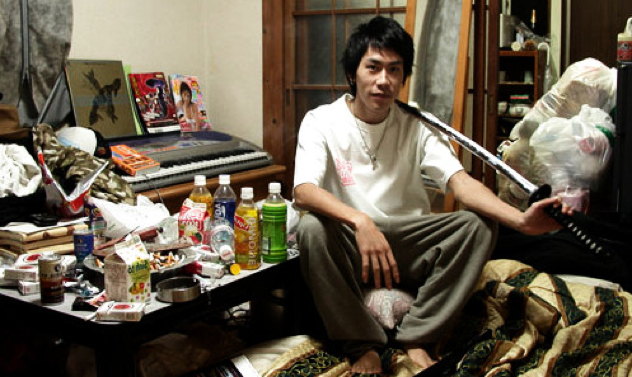
Although Earth’s population is rising at an exponential rate, the Japanese are slowly dying off behind an aging infrastructure. Compounding the problem is a growing problem: the shut-in “hikikomori.” To be sure, every society is home to a small number of people who could be described as “reclusive”—though most of these recluses tend to be older individuals, marked with mental illnesses such as depression and agoraphobia. Japan’s hikikomore hermits, on the other hand, are decidedly young. They’re mostly disaffected teenagers and twenty-somethings, withdrawn almost completely from society. There is no precise explanation to account for the rise in hikikomori, though there are several known contributing factors, including the rise of the internet, intense academic pressures, and parents willing to shelter their children well into adulthood. Psychiatrists (many of whom are forced to make house calls to visit their patients), have only recently set upon the task of helping the group dubbed by some as “the missing million.”
#9 Crime
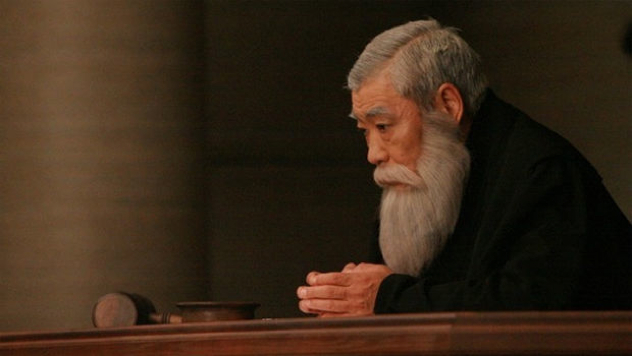
Although legends of the Yakuza are prevalent, crime rates are particularly low in Japan. It is illegal to own a handgun, and even ceremonial swords must be registered with the police. The country enjoys the second lowest homicide rate in the world, behind only Monaco (a country about half the size of New York’s Central Park). If you ever have the misfortune of standing trial in Japan, however, you can be almost certain that you’re going to jail; indeed, the conviction rate is said to exceed ninety-nine percent (the career of a judge can suffer greatly for handing out acquittals).Capital punishment is exercised in Japan, and around two or three inmates are executed every year. Unlike most other countries, death row inmates are only informed hours beforehand when their time is up. The family is not informed until the condemned father, sibling, or child is already dead. Although Japan has a history of rather gruesome and unconventional methods of execution, prisoners are generally executed by hanging today.
#8 Food
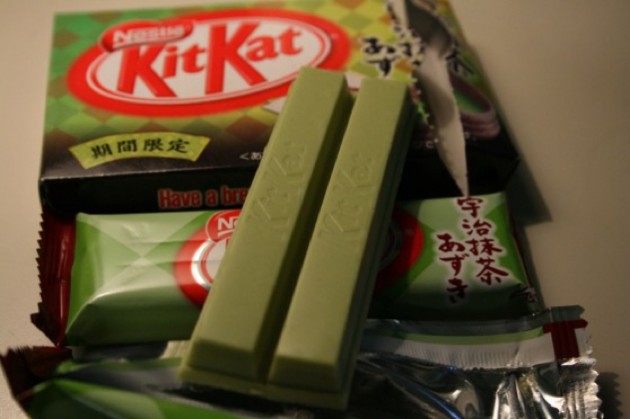
As I described in a previous list, the Japanese have a predilection for novelty foods and beverages; indeed, the range of flavors they utilize often seem repellent to Western palates. Due to a coincidence of language, the Kit Kat chocolate bar is enormously popular in Japan. “Kit Kat” is remarkably similar to the phrase “kitto katsu” (literally: you shall surely win), which is used as a sentiment of good luck. Students are often given the candy before an exam as a good luck charm. Unlike the rest of the world, which features only a milk chocolate version, Japan maintains dozens of exotic flavors, such as grilled corn, miso, camembert cheese, baked potato, and soy sauce.
#7 Job Performance
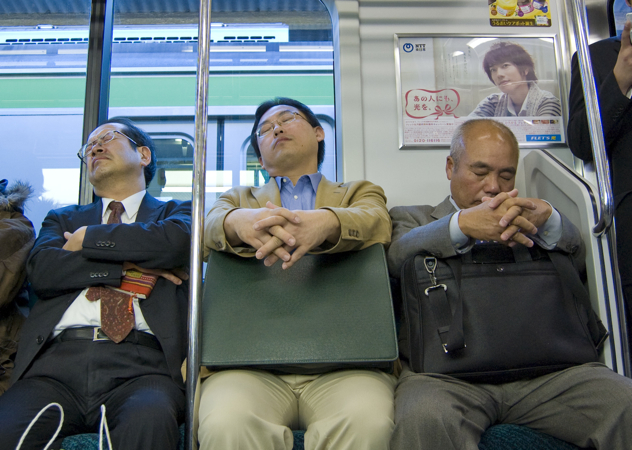
Although the Japanese are known for their industrious work ethic, the stereotype of the boozy businessman warbling “Margaritaville” in a karaoke bar is not that far from the truth. Marathon drinking sessions are often seen as a cornerstone of the Japanese business model; corporate relationships are forged over gallons of sake, younger salarymen struggling in vain to keep up with their seasoned bosses. That said, it’s also relatively easy to nurse a hangover. The Japanese business culture values an employee who naps on the job. “Inemuri,” as it is known, is a quick cat-nap meant to recharge the batteries. It is seen as a sign of hard work and commitment.
#6 Kodokushi
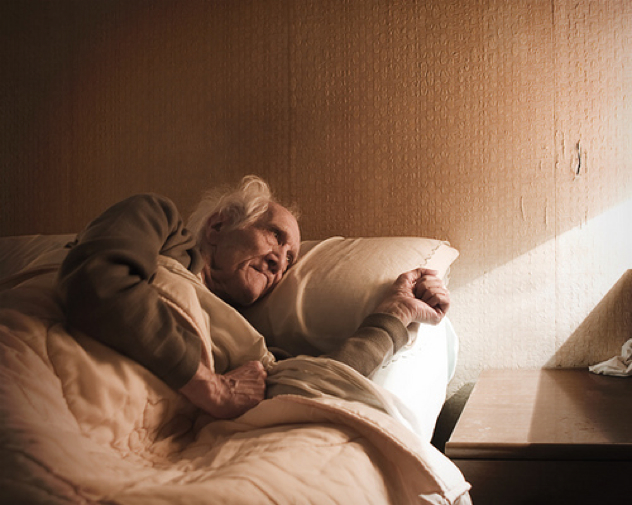
Nothing appears to be more tragic than dying alone—but it happens in Japan all the time. One of the unfortunate side effects of maintaining such an elderly population (one in five Japanese are over the age of sixty five, many of them well into their eighties and nineties) is that people tend to die at home. These people often go undiscovered, sometimes for months or even years—a phenomenon known as “kodokushi”, the lonely deaths. Thousands of cases occur in Japan each year, especially among men who have few social ties. Sometimes the bodies are left for so long that they self-mummify.
There are even companies which specialize in cleaning out the apartments of people who have succumbed to such a fate—even dealing with the grisly “kodokushi stains” left behind by a rotting body. It is estimated that in another twenty years, one in three Japanese will be senior citizens—an estimation which does not bode well for a halt in lonely deaths.
#5 Porn
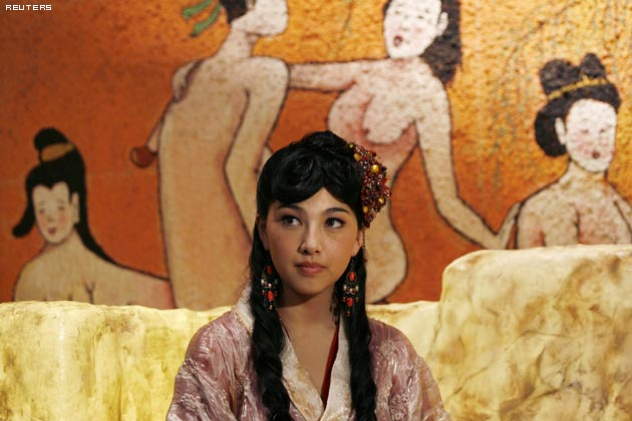
Japan has always been something of a restrictive society, and that prudishness extends all the way to its pornography. Although hardcore sex acts are allowed to be filmed, the genitalia of the performers is required to be blurred out, in order to uphold moral laws. This has steered Japanese porn-makers towards a trend called “bukkake”—the prominent display “resultant fluids”—as proof that the actors are really engaging in sex. Curiously enough, a huge number of Japanese youths have reported that they have very little interest in sex. This is especially true for many males, who are often referred to as soshoku danshi, or “herbivore men.”
#4 Pachinko
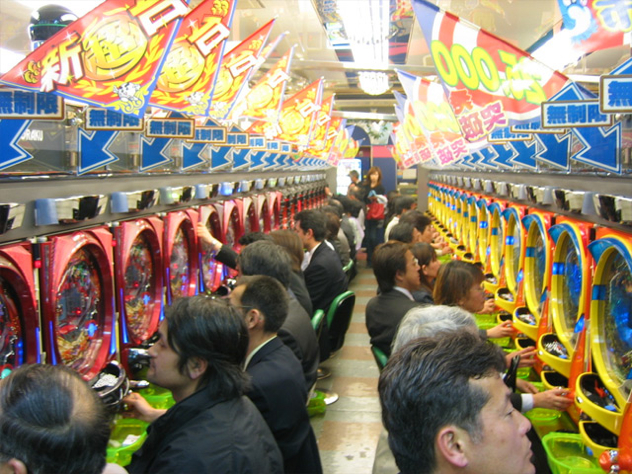
Pachinko is a kind of cross between pinball and slot machines; it involves an upright machine, in which players shoot balls which descend through a series of pins. If the balls land in the right spot, more balls will be produced. Although gambling is technically illegal in Japan, winners are provided with a token based on their score which can be redeemed elsewhere for cash (a little bit like turning in your tickets at Chuck E. Cheese for a prize). There is currently a push to legalize pachinko in Japan, with industry insiders estimating a potential gambling revenue that would approach $10 billion a year—nearly double that of Las Vegas.
#3 Yaeba

Anyone who has suffered through the stigma of wearing braces (or any parent who has shelled out thousands for orthodonture) understands the importance of straight, even teeth. In Japan, however, there is a growing trend among young women for yaeba (literally “double tooth”) caps on the canines, which lends their smile a kind of crowded appearance. As bizarre beauty trends go, this one is somewhat costly to implement—but at least it’s reversible.
#2 Suicides

Although homicides in Japan are almost nonexistent, the country has one of the highest suicide rates in the world—in some cases more than twice that of other developed countries. Although attitudes are changing, suicide was for a long time accepted by the culture as a noble act—a way of protecting honor, and defending the reputation of the family. One of the most startling suicide trends involves leaping in front of commuter trains. This has become such an issue that rail companies usually fine surviving family members for the inconvenience. Japan is also home to the chilling Aokigahara Forest. Located near Mount Fuji, Aokigahara is often mentioned by Listverse writers, and is well known as a hotspot for suicides.
#1 Kentucky Fried Chicken
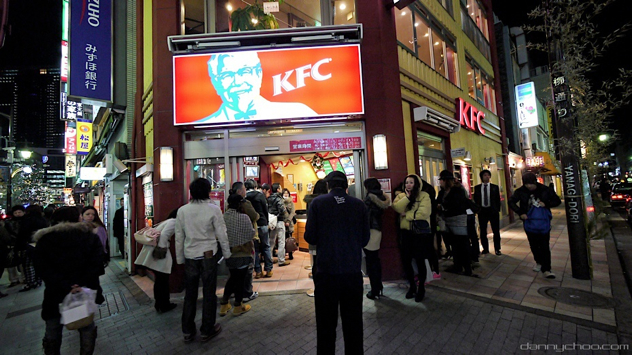
The typical Japanese diet is quite healthy; daily staples like rice, tofu, and fresh vegetables make them some of the longest-lived people on earth. But many Japanese people also have a weakness for familiar American comfort food—most notably, fried chicken. In major cities, there is often a KFC to be found every few blocks, with each restaurant hosting a life-sized statue of Colonel Sanders standing out front. Although only a small handful of Japanese are Christian, they have adopted KFC as a Christmas Eve tradition. On December 24, every KFC in Japan features lines out the door. Many make reservations months in advance.
The KFC legend is not confined only to the holiday season. In 1985, when the Hanshin Tigers baseball team won the Japan Series, revelers spilled into the streets. Amid the chaos, a statue of Colonel Sanders was thrown into a canal in Osaka. In the subsequent years, the Tigers have continually failed to win another championship—felled, supposedly, by the “Curse of the Colonel”. In 2009, most of the statue was recovered from the river. The glasses and the left hand are still missing, however, and some locals believe that the curse will not lift until the Colonel is whole.
